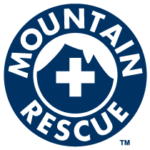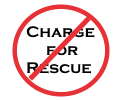Recruitment Status
We are not currently accepting applications for recruitment. Check back in the fall of 2024 for information about our 2025 recruitment cycle.
Join the Team
Thank you for your interest in becoming a member of the San Diego Mountain Rescue Team. We are not currently accepting applications for our 2024 recruitment cycle. Please Check back in the fall of 2024 for information about our 2025 recruitment cycle.
Our Application Process:
Potential Trainees must complete an application. Send completed applications to recruitment@sdmrt.org. Applicants meeting minimum qualifications will be asked to discuss their motivation and experience in an interview with several members of the team. Because of the vast differences between recreational/sport/adventure hiking and climbing and those related to technical mountain rescue work, we want to make sure that potential Trainees understand the additional physical and mental demands of the latter, as well as the time and fiscal expectations of joining our team.
Those selected to demonstrate their skills will be invited to an orientation and a mandatory field try-out.
BASIC MINIMUM REQUIREMENTS:
- Must be at least 18 years old.
- Must be in excellent physical condition.
- Must have recent (generally within the last couple years) extensive backpacking or mountaineering or equivalent experience. In essence, you must have experience that demonstrates that you are entirely self-sufficient in a wilderness setting for at least a couple of days and nights.
- Must pass a Sheriff’s Department background investigation.
- Must be a US citizen, or legal alien with US citizenship application submitted.
If accepted as a prospective member, you MUST also attend our weekend-long Multi-SAR field training, typically held in October each year. Unfortunately, we cannot make exceptions to this requirement.
TEAM INFORMATION
Our team is a close-knit group of men and women dedicated to providing professional search and rescue services in any weather, at any time, and on any terrain. We operate under the direction and control of the agency responsible for search and rescue at the operation site, usually the local county Sheriff’s department, and for that reason, must have members with high dedication and proficiency. The work requires considerable personal commitment, from learning our procedures to attending trainings and, finally, to responding at any time to rescue calls. The time involved, costs, and responsibilities are explained below. You should seriously consider these factors before applying for membership; however, if you feel you are qualified, the rewards are well worth the investment you will make as a volunteer rescuer.
ORGANIZATION
SDMRT is a California 501(c)(3) nonprofit corporation, a member of the Mountain Rescue Association, and a recognized leader in the field of Search and Rescue. We go anywhere we are requested and have responded in the past both out of state and out of the country. The majority of the Team’s operations are in San Diego County and are conducted in coordination with the San Diego Sheriff’s Search and Rescue Unit. The Team was founded in 1967 and has logged over 1500 missions.
Membership is divided into two major categories: Rescue Members comprise the majority of the Team and perform all normal field work, and Trainees who are persons in training to become Rescue Members. A seven-person Board of Directors is elected each year by the membership to direct the Team’s activities; however, the full membership participates in all policy decisions. During field operations, the Team is directed by an Operation Leader selected from a small number of qualified members.
MEMBERSHIP REQUIREMENTS
Prospective members must be 18 years old, in excellent physical condition, and have recent backpacking, mountaineering, or equivalent outdoor experience. As a minimum you must be self-reliant and comfortable in a wilderness setting on the type of terrain and under the conditions in which we must operate. This means you must have adequate backpacking equipment, and know how to use it. In addition, we look for characteristics that enable a person to become an effective rescuer – motivation, maturity, judgment, stability, tenacity, leadership, and the ability to work well with other people under stressful conditions. It also helps to have a sense of humor!
TRAINING
Specialized emergency rescue units must be composed of disciplined, highly trained, dependable people. The lives of fellow Team members, as well as the person being rescued, depend on each member performing capably in a complex and usually exhausting situation. For this reason, each Trainee must meet the minimum requirements shown on the training requirements list before becoming a Rescue Member. All training is provided by the Team except for the medical certification, which can be obtained through outside sources. It usually takes two to four years to become a fully qualified Rescue Member by completing all requirements during regular Team training evolutions. Trainees may participate in operations, however, after completing a basic training course and fulfilling certain other requirements. We are generalists. Although certain members may specialize in one or more subjects, we expect all Rescue Members to be competent in all skills, since we never know which will be needed in any situation. Training may be strenuous, but we stress safety at all times. Operations are run on a semi-military structure, requiring members to follow the legitimate orders of the Team leaders.
TIME
We hold three events each month. The Team business meeting is typically held on the second Wednesday of the month at 7:00 PM. On most weekends after the Team meeting, we hold our monthly field training, which usually runs from Friday evening to Sunday afternoon. A classroom training, dealing with the next field training subject, is usually held at 7:00 PM on the fourth Wednesday of the month.
Within the first three months after acceptance, Trainees must attend two Team meetings, two classroom trainings, and two field trainings. After that, they must attend at least 50% of the Team meetings, indoor trainings, and field trainings and at least 10% of the operations in order to remain in good standing on the Team. Actual operations can come at any time, so it is important to be able to go without delay. Check with your employer about getting an occasional day off, without prior notice, for searches. Counting everything, you can expect to spend between 400 and 800 hours each year as a Team member.
COSTS
Although the Team provides some equipment such as technical rescue gear, medical equipment, litters, and radios, each member must pay all of his or her personal expenses. SDMRT is financed entirely by dues and contributions. The majority of personal expenses are for specialized equipment and transportation. If you have basic backpacking equipment (pack, sleeping bag, tent, boots, etc.), your expenses will be mostly limited to additional special rescue gear such as mountaineering equipment, uniform, and winter gear. You can see what is mandatory on the PERSONAL EQUIPMENT LIST.
Transportation costs usually involve gasoline and other car expenses, as you will be driving or carpooling to most training and operations. Team dues are currently $35 per year, $15 of which goes to the National Mountain Rescue Association (MRA). You will need a cell phone, or other device, capable of receiving text messages and email. Starting off, expect to spend $500 to $800 in your first year on the Team. Many of these expenses may be tax-deductible (check with your individual tax adviser).
QUESTIONS?
Email: recruitment@sdmrt.org
Mail: SDMRT, P.O. Box 81602, San Diego CA 92138



